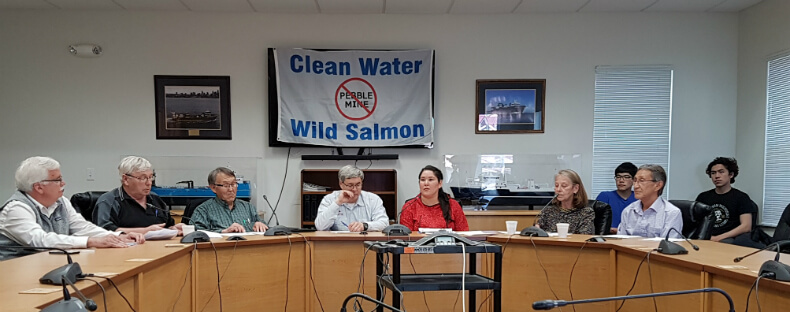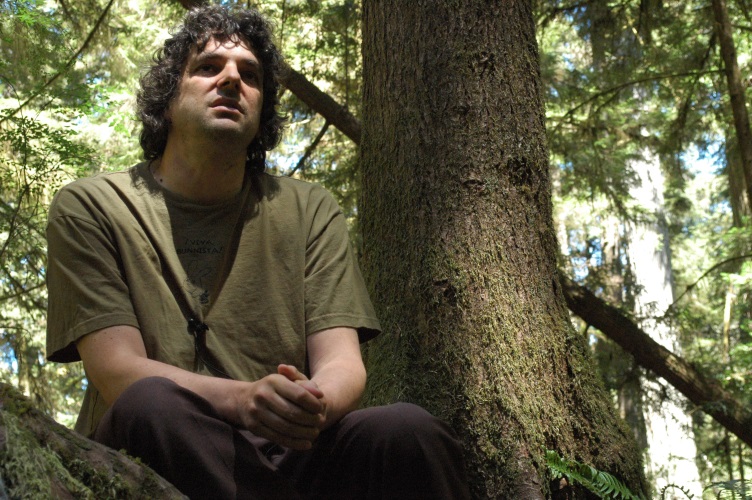Sustainability is Destroying the Earth: The Green Economy vs. The Planet
by Kim Hill, Deep Green Resistance Australia
Don’t talk to me about sustainability. You want to question my lifestyle, my impact, my ecological footprint? There is a monster standing over us, with a footprint so large it can trample a whole planet underfoot, without noticing or caring. This monster is Industrial Civilization. I refuse to sustain the monster. If the Earth is to live, the monster must die. This is a declaration of war.
What is it we are trying to sustain? A living planet, or industrial civilization? Because we can’t have both.
Somewhere along the way the environmental movement – based on a desire to protect the Earth, was largely eaten by the sustainability movement – based on a desire to maintain our comfortable lifestyles. When did this happen, and why? And how is it possible that no-one noticed? This is a fundamental shift in values, to go from compassion for all living beings and the land, to a selfish wish to feel good about our inherently destructive way of life.
 The sustainability movement says that our capacity to endure is the responsibility of individuals, who must make lifestyle choices within the existing structures of civilization. To achieve a truly sustainable culture by this means is impossible. Industrial infrastructure is incompatible with a living planet. If life on Earth is to survive, the global political and economic structures need to be dismantled.
The sustainability movement says that our capacity to endure is the responsibility of individuals, who must make lifestyle choices within the existing structures of civilization. To achieve a truly sustainable culture by this means is impossible. Industrial infrastructure is incompatible with a living planet. If life on Earth is to survive, the global political and economic structures need to be dismantled.
Sustainability advocates tell us that reducing our impact, causing less harm to the Earth, is a good thing to do, and we should feel good about our actions. I disagree. Less harm is not good. Less harm is still a lot of harm. For as long as any harm is caused, by anyone, there can be no sustainability. Feeling good about small acts doesn’t help anyone.
Only one-quarter of all consumption is by individuals. The rest is taken up by industry, agribusiness, the military, governments and corporations. Even if every one of us made every effort to reduce our ecological footprint, it would make little difference to overall consumption.
If the lifestyle actions advocated really do have the effect of keeping our culture around for longer than it would otherwise, then it will cause more harm to the natural world than if no such action had been taken. For the longer a destructive culture is sustained, the more destruction it causes. The title of this article isn’t just attention-grabbing and controversial, it is quite literally what’s going on.
When we frame the sustainability debate around the premise that individual lifestyle choices are the solution, then the enemy becomes other individuals who make different lifestyle choices, and those who don’t have the privilege of choice. Meanwhile the true enemy — the oppressive structures of civilization — are free to continue their destructive and murderous practices without question. This is hardly an effective way to create a meaningful social movement. Divide and be conquered.
Sustainability is popular with corporations, media and government because it fits perfectly with their aims. Maintain power. Grow. Make yourself out to be the good guy. Make people believe that they have power when they don’t. Tell everyone to keep calm and carry on shopping. Control the language that is used to debate the issues. By creating and reinforcing the belief that voting for minor changes and buying more stuff will solve all problems, those in power have a highly effective strategy for maintaining economic growth and corporate-controlled democracy.
Those in power keep people believing that the only way we can change anything is within the structures they’ve created. They build the structures in a way that people can never change anything from within them. Voting, petitions, and rallies all reinforce the power structures, and can never bring about significant change on their own. These tactics give corporations and governments a choice. We’re giving those in power a choice of whether to grant our request for minor reform. Animals suffering in factory farms don’t have a choice. Forests being destroyed in the name of progress don’t have a choice. Millions of people working in majority-world sweatshops don’t have a choice. The 200 species who became extinct today didn’t do so by choice. And yet we give those responsible for all this murder and suffering a choice. We’re granting the desires of a wealthy minority above the needs of life on Earth.
Most of the popular actions that advocates propose to achieve sustainability have no real effect, and some even cause more harm than good. The strategies include reducing electricity consumption, reducing water use, a green economy, recycling, sustainable building, renewables and energy efficiency. Let’s look at the effects of these actions.
Electricity
We’re told to reduce our consumption of electricity, or obtain it from alternative sources. This will make zero difference to the sustainability of our culture as a whole, because the electricity grid is inherently unsustainable. No amount of reduction or so-called renewable energy sources will change this. Mining to make electrical wires, components, electrical devices, solar panels, wind turbines, geothermal plants, biomass furnaces, hydropower dams, and everything else that connects to the electricity grid, are all unsustainable. Manufacturing to make these things, with all the human exploitation, pollution, waste, health and social impacts, and corporate profits. Fossil fuels needed to keep all these processes going. Unsustainable. No amount of individual lifestyle choices about electricity use and generation will change any of this. Off grid electricity is no different – it needs batteries and inverters.
Water conservation
Shorter showers. Low-flow devices. Water restrictions. These are all claimed to Make A Difference. While the whole infrastructure that provides this water – large dams, long distance pipelines, pumps, sewers, drains – is all unsustainable.
Dams destroy the life of a whole watershed. It’s like blocking off an artery, preventing blood from flowing to your limbs. No-one can survive this. Rivers become dead when fish are prevented from travelling up and down the river. The whole of the natural community that these fish belong to is killed, both upstream and downstream of the dam.
Dams cause a lowering of the water table, making it impossible for tree roots to get to water. Floodplain ecologies depend on seasonal flooding, and collapse when a dam upstream prevents this. Downstream and coastal erosion results. Anaerobic decomposition of organic matter in dams releases methane to the atmosphere.
No matter how efficient with water you are, this infrastructure will never be sustainable. It needs to be destroyed, to allow these communities to regenerate.
The green economy
Green jobs. Green products. The sustainable economy. No. There’s no such thing. The whole of the global economy is unsustainable. The economy runs on the destruction of the natural world. The Earth is treated as nothing but fuel for economic growth. They call it natural resources. And a few people choosing to remove themselves from this economy makes no difference. For as long as this economy exists, there will be no sustainability.
For as long as any of these structures exist: electricity, mains water, global economy, industrial agriculture – there can be no sustainability. To achieve true sustainability, these structures need to be dismantled.
What’s more important to you – to sustain a comfortable lifestyle for a little longer, or the continuation of life on Earth, for the natural communities who remain, and for future generations?
Recycling
We’re made to believe that buying a certain product is good because the packaging can be recycled. You can choose to put it in a brightly-coloured bin. Never mind that fragile ecosystems were destroyed, indigenous communities displaced, people in far away places required to work in slave conditions, and rivers polluted, just to make the package in the first place. Never mind that it will be recycled into another useless product which will then go to landfill. Never mind that to recycle it means transporting it far away, using machinery that run on electricity and fossil fuels, causing pollution and waste. Never mind that if you put something else in the coloured bin, the whole load goes to landfill due to the contamination.
Sustainable building
Principles of sustainable building: build more houses, even though there are already enough perfectly good houses for everyone to live in. Clear land for houses, destroying every living thing in the natural communities that live there. Build with timber from plantation forests, which have required native forests to be wiped out so they can be replaced with a monoculture of pines where nothing else can live. Use building products that are slightly less harmful than other products. Convince everyone that all of this is beneficial to the Earth.
Solar power
Solar panels. The very latest in sustainability fashion. And in true sustainability style, incredibly destructive of life on earth. Where do these things come from? You’re supposed to believe that they are made out of nothing, a free, non-polluting source of electricity.
If you dare to ask where solar panels come from, and how they are made, its not hard to uncover the truth. Solar panels are made of metals, plastics, rare earths, electronic components. They require mining, manufacturing, war, waste, pollution. Millions of tons of lead are dumped into rivers and farmland around solar panel factories in China and India, causing health problems for the human and natural communities who live there. Polysilicon is another poisonous and polluting waste product from manufacturing that is dumped in China. The production of solar panels causes nitrogen trifluoride (NF3) to be emitted into the atmosphere. This gas has 17 000 times the global warming potential of carbon dioxide.
Rare earths come from Africa, and wars are raged over the right to mine them. People are being killed so you can have your comfortable Sustainability. The panels are manufactured in China. The factories emit so much pollution that people living nearby become sick. Lakes and rivers become dead from the pollution. These people cannot drink the water, breathe the air or farm the land, as a direct result of solar panel manufacturing. Your sustainability is so popular in China that villagers mobilise in mass protest against the manufacturers. They are banding together to break into the factories and destroy equipment, forcing the factories to shut down. They value their lives more than sustainability for the rich.
Panels last around 30 years, then straight to landfill. More pollution, more waste. Some parts of solar panels can be recycled, but some can’t, and have the bonus of being highly toxic. To be recycled, solar panels are sent to majority-world countries where low-wage workers are exposed to toxic substances while disassembling them. The recycling process itself requires energy and transportation, and creates waste products.
Solar panel industries are owned by Siemens, Samsung, Bosch, Sharp, Mitsubishi, BP, and Sanyo, among others. This is where solar panel rebates and green power bills are going. These corporations thank you for your sustainable dollars.
Wind power
The processing of rare earth metals needed to make the magnets for wind turbines happens in China, where people in the surrounding villages struggle to breathe in the heavily polluted air. A five-mile-wide lake of toxic and radioactive sludge now takes the place of their farmland.
Whole mountain ranges are destroyed to extract the metals. Forests are bulldozed to erect wind turbines. Millions of birds and bats are killed by the blades. The health of people living close to turbines is affected by infrasound.
As wind is an inconsistent and unpredictable source of energy, a back-up gas fired power supply is needed. As the back-up system only runs intermittently, it is less efficient, so produces more CO2 than if it were running constantly, if there were no turbines. Wind power sounds great in theory, but doesn’t work in practice. Another useless product that benefits no-one but the shareholders.
Energy efficiency
How about we improve energy efficiency? Won’t that reduce energy consumption and pollution? Well, no. Quite the opposite. Have you heard of Jevon’s paradox? Or the Khazzoom-Brookes Postulate? These state that technological advances to increase efficiency lead to an increase in energy consumption, not a decrease. Efficiency causes more energy to be available for other purposes. The more efficient we become at consuming, the more we consume. The more efficiently we work, the more work gets done. And we’re working at efficiently digging ourselves into a hole.
The economics of supply and demand
Many actions taken in the name of sustainability can have the opposite effect. Here’s something to ponder: one person’s decision not to take flights, out of concern about climate change or sustainability, won’t have any impact. If a few people stop flying, airlines will reduce their prices, and amp up their marketing, and more people will take flights. And because they are doing it at lower prices, the airline needs to make more flights to make the profit it was before. More flights, more carbon emissions. And if the industry hit financial trouble as a result of lowered demand, it would get bailed out by governments. This “opt-out” strategy can’t win.
The decision not to fly isn’t doing anything to reduce the amount of carbon being emitted, it’s just not adding to it in this instance. And any small reduction in the amount of carbon being emitted does nothing to stop climate change.
To really have an impact on global climate, we’ll need to stop every aeroplane and every fossil-fuel burning machine from operating ever again. And stopping every fossil-fuel burning machine is nowhere near the impossible goal it may sound. It won’t be easy, but it’s definitely achievable. And it’s not only desirable, but essential if life on this planet is to survive.
The same goes for any other destructive product we might choose not to buy. Factory-farmed meat, palm oil, rainforest timbers, processed foods. For as long as there is a product to sell, there will be buyers. Attempting to reduce the demand will have little, if any, effect. There will always be more products arriving on the market. Campaigns to reduce the demand of individual products will never be able to keep up. And with every new product, the belief that this one is a need, not a luxury, becomes ever stronger. Can I convince you not to buy a smartphone, a laptop, a coffee? I doubt it.
To stop the devastation, we need to permanently cut off the supply, of everything that production requires. And targeting individual companies or practices won’t have any impact on the global power structures that feed on the destruction of the Earth. The whole of the global economy needs to be brought to a halt.
What do you really want?
What’s more important – sustainable energy for you to watch TV, or the lives of the world’s rivers, forests, animals, and oceans? Would you sooner live without these, without Earth? Even if this was an option, if you weren’t tightly bound in the interconnected in the web of life, would you really prefer to have electricity for your lights, computers and appliances, rather than share the ecstasy of being with all of life on Earth? Is a lifeless world ruled by machines really what you want?
If getting what you want requires destroying everything you need – clean air and water, food, and natural communities – then you’re not going to last long, and neither will anyone else.
I know what I want. I want to live in a world that is becoming ever more alive. A world regenerating from the destruction, where every year there are more fish, birds, trees and diversity than the year before. A world where I can breathe the air, drink from the rivers and eat from the land. A world where humans live in community with all of life.
Industrial technology is not sustainable. The global economy is not sustainable. Valuing the Earth only as a resource for humans to exploit is not sustainable. Civilization is not sustainable. If civilization collapsed today, it would still be 400 years before human existence on the planet becomes truly sustainable. So if it’s genuine sustainability you want, then dismantle civilization today, and keep working at regenerating the Earth for 400 years. This is about how long it’s taken to create the destructive structures we live within today, so of course it will take at least that long to replace these structures with alternatives that benefit all of life on Earth, not just the wealthy minority. It won’t happen instantly, but that’s no reason not to start.
You might say let’s just walk away, build alternatives, and let the whole system just fall apart when no-one pays it any attention any more. I used to like this idea too. But it can’t work. Those in power use the weapons of fear and debt to maintain their control. The majority of the world’s people don’t have the option of walking away. Their fear and debt keeps them locked in the prison of civilization. Your walking away doesn’t help them. Your breaking down the prison structure does.
We don’t have time to wait for civilization to collapse. Ninety per cent of large fish in the oceans are gone. 99 per cent of the old growth forests have been destroyed. Every day 200 more species become extinct, forever. If we wait any longer, there will be no fish, no forests, no life left anywhere on Earth.
So what can you do?
Spread the word. Challenge the dominant beliefs. Share this article with everyone you know.
Listen to the Earth. Get to know your nonhuman neighbours. Look after each other. Act collectively, not individually. Build alternatives, like gift economies, polyculture food systems, alternative education and community governance. Create a culture of resistance.
Rather than attempting to reduce the demand for the products of a destructive system, cut off the supply. The economy is what’s destroying the planet, so stop the economy. The global economy is dependent on a constant supply of electricity, so stopping it is (almost) as easy as flicking a switch.
Governments and industry will never do this for us, no matter how nicely we ask, or how firmly we push. It’s up to us to defend the land that our lives depend on.
We can’t do this as consumers, or workers, or citizens. We need to act as humans, who value life more than consuming, working and complaining about the government.
Learn about and support Deep Green Resistance, a movement with a working strategy to save the planet. Together, we can fight for a world worth living in. Join us.
In the words of Lierre Keith, co-author of the book Deep Green Resistance, “The task of an activist is not to navigate systems of oppressive power with as much personal integrity as possible; it is to dismantle those systems.”
Do you agree with this analysis? If so, we have three steps for you to take:
- Join more than 1500 others in signing and sharing the open letter to reclaim environmentalism
- Join our email list
- Consider becoming a member of Deep Green Resistance.
From Stories of Creative Ecology August 28, 2012
To repost this or other DGR original writings, please contact newsservice@deepgreenresistance.org







